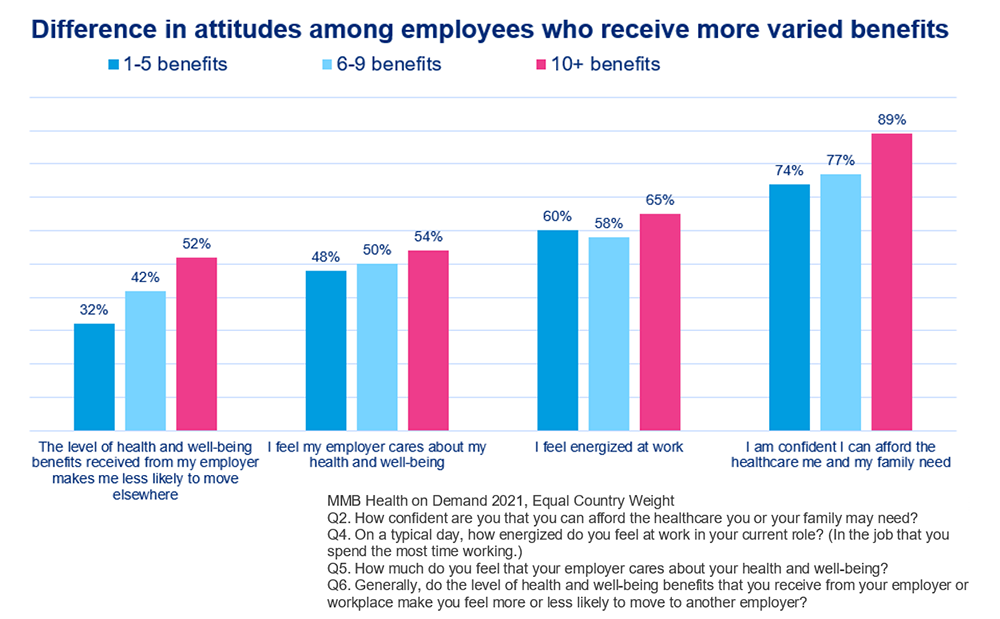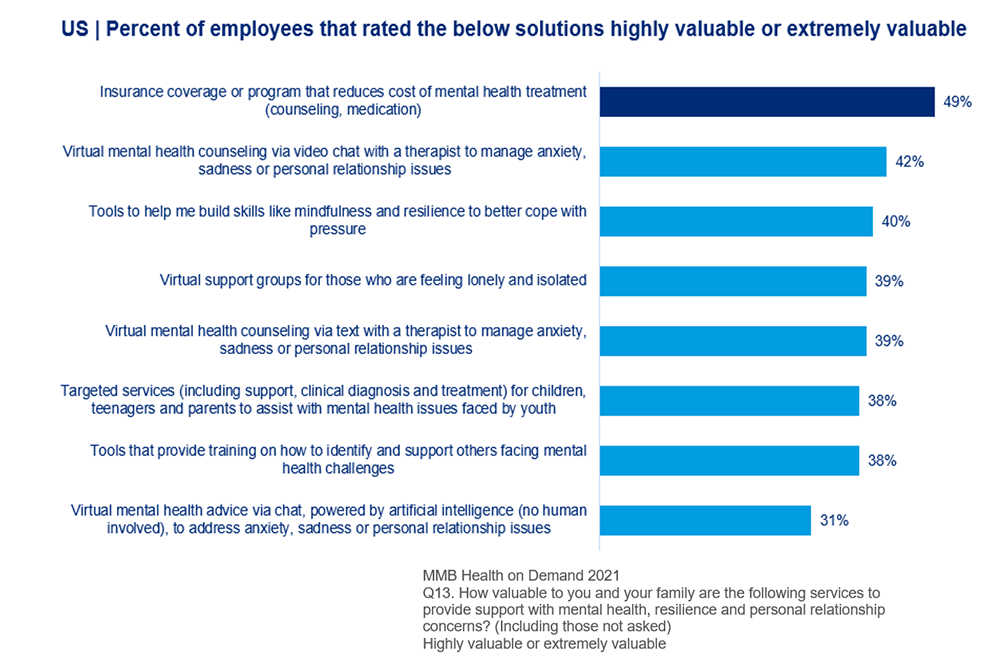Health on Demand Insights

The Health on Demand research points to a number of areas where employers should focus now to support workforce health and well-being for the years ahead. Here are four of the key actions you can take to strengthen your employee value proposition:
Provide something of value to everyone
Employees who are offered a broad range of benefits feel more positive about their employers. Crucially, they are more likely to say that benefits are a reason to stay at their jobs. They are also more confident that they can afford the health care they need.

Providing varied benefits means it’s more likely you are providing something of value to everyone.
The survey asked workers to rate the value to them of nearly 50 health and well-being offerings. It’s notable that significant pockets of the workforce placed high value on a number of benefits that were almost unheard of a couple of years ago: for example, platforms to connect socially with colleagues, home testing kits for common health conditions, and digital helpers for elderly relatives. Understanding the preferences of your workforce through surveys and focus groups is a critical step in designing an optimized total rewards package.
Flex your schedules, especially for caregivers
Flexible working emerged as the single most valued type of health and well-being support, with well over half (59%) of US employees saying that flexible working arrangements are highly or extremely valuable. Caregivers in particular appreciated being able to flex in order to meet the needs of their family. This will continue post-pandemic. And while 71% of companies are introducing, or planning to introduce, more flexible working arrangements, it will take creativity – and listening to employees -- to make this transition successfully. Employers that commit to offering flexible working will need to support employees working remotely in new ways, such as by addressing ergonomic health and social connectivity.
Embrace the shift to digital health
The pandemic has introduced many employees to telemedicine – 20% of US workers say they tried it for the first time during the pandemic and most say they will continue to use it after the pandemic. Importantly, openness to digital health care goes beyond telemedicine. Compared to our 2019 survey, we saw significant growth in employees assigning high value to a whole range of digital health solutions, from apps that help people self-manage health conditions to smart pill bottles that improve medication compliance. Another encouraging finding is that the majority of US employees say they trust their employers to provide high-quality and secure personal health solutions. Employers have an opportunity to build on this trust and employees’ growing acceptance of digital health to incorporate virtual health care as an integral part of the health and well-being programs – targeting quality improvement and savings while meeting a broader range of employee needs.
Improve access to mental healthcare
With 25% of employees saying they feel highly or extremely stressed in their everyday life (and another 34% feeling somewhat stressed), digital health also has a major role to play in broadening access to much-needed mental health care. Half of employees (49%) say benefits or resources that make mental health care more affordable would be highly or extremely valuable to them, and many are eager for digital options.
Perhaps the greatest opportunity highlighted by the research is in understanding the range of employee preferences and providing benefits and resources that feel meaningful and personal for all. That’s an important step towards the goal of creating a culture of health aligned with the organization’s diversity, equity and inclusion principles.
